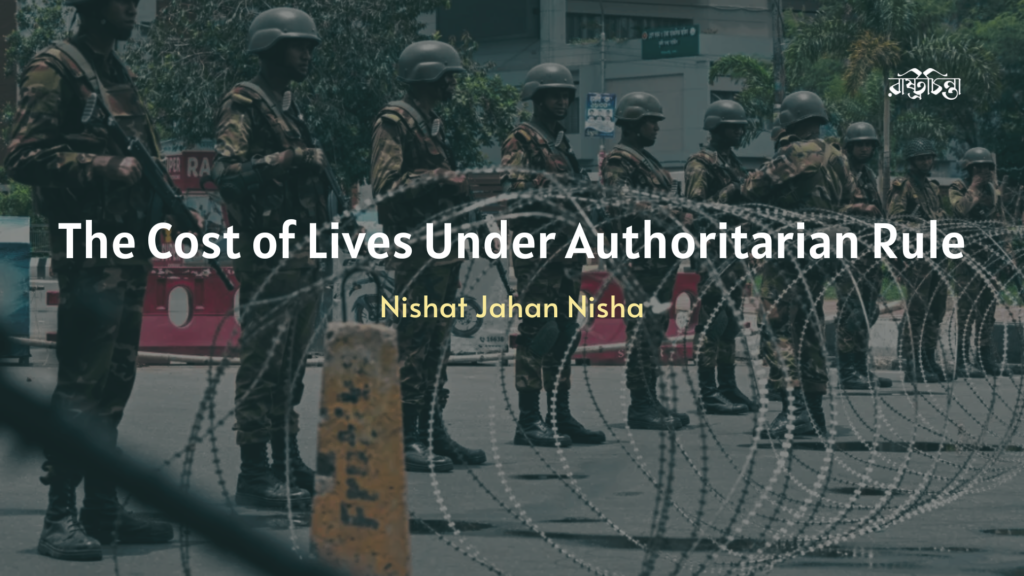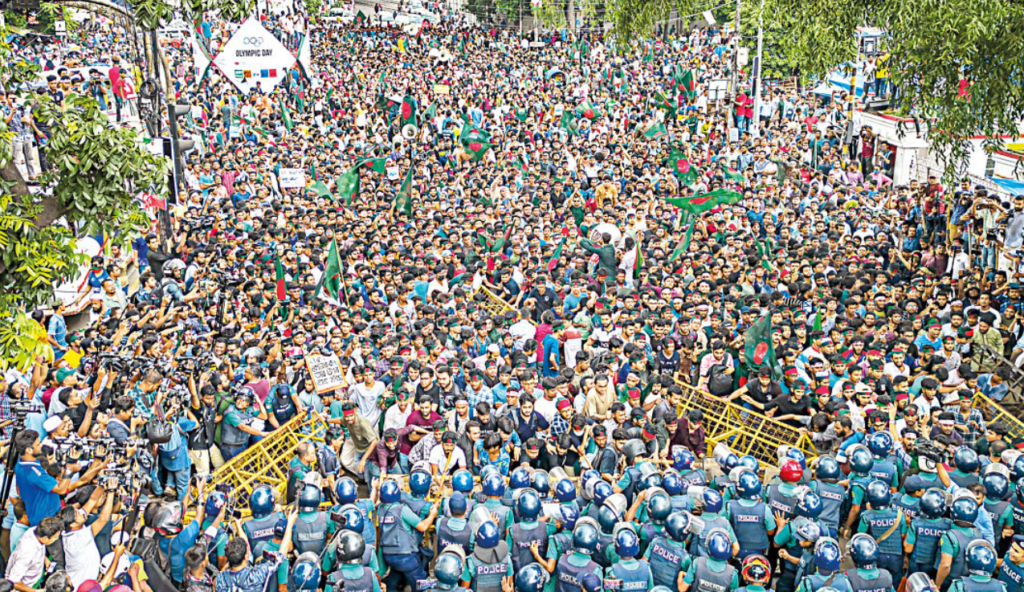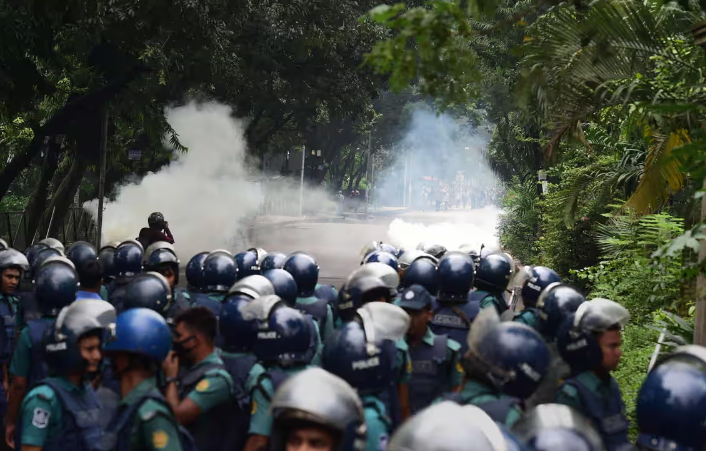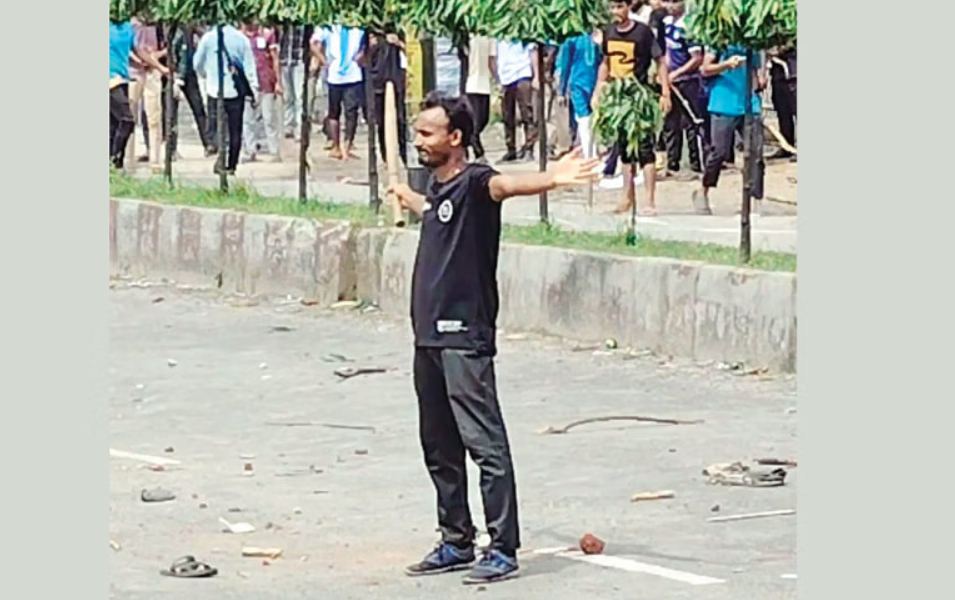
- Nishat Jahan Nisha
The people of Bangladesh are terrified, anxious, crying, and mourning the loss of loved ones. They wake at midnight to the sound of doors being broken down by the RAB, DGFI, police, and an unknown special force in white clothing. These forces enter bedrooms and take away children, sons, daughters, husbands, or fathers, leaving families without any information about their whereabouts.
When families inquire at police stations, they find no records of these arrests. These people are untraced; they are taken and kept in a secret cell run by the state forces, brutally tortured, and forced to withdraw the movement and deliver the prescribed statement by the state force. When they refused it, they were tortured more.
At least five coordinators were picked like this, and they were returned brutally tortured only after people started talking about them and the international media published news; they were returned blindfolded in an unknown place or the place they were picked from. People are running from hospital to hospital, from police station to police station, to find the dead bodies of their loved ones, but many are not lucky enough to get the dead bodies. There are missing documents about the death lists in the last few days in the large hospitals in Dhaka and the death crematory organization “Anzuman Mofidul”. The family and relatives also claimed that they didn’t even get the death certificate of the loved ones who lost lives in the open fire by the police force, BGB, and RAB. Whoever was lucky to get the death certificate, there was no mention of their main death reason; all that was mentioned was a false one like “death caused by breathing problems.”
In different newspapers, there was variation about the exact death number. What is the actual number of deaths in this brutal crackdown? 200? or 300? or more than that? Witnesses, including protesters and doctors, have claimed that the toll might be much higher than reported.

We shouldn’t forget that from 18 July night till 23 July, there was a complete blackout of all means of communication, both telecommunication and internet. From 18 July night, all the local newspapers and news channels stopped broadcasting any kind of news. Also, the international media who were broadcasting the news mentioned each time they were broadcasting news, that they were unable to get any sort of news even inside Dhaka, the capital of Bangladesh, let alone other parts of the country. This blackout suggests a deliberate attempt by the government to hide the scale of the crackdown on students and civilians.
During the protests, security forces fired at civilians even inside their homes, killing those who were studying near windows or seeking fresh air on terraces. During this time of protest, they picked up more than 3000 students and civilians across the country and arrested them without any specific charges. According to speculation, the number must be higher than this. Also, more than thousands of students and civilians are severely injured by the beating, rubber bullets, and bullets.
In every street, police, BGB, RAB, and army forces are checking the phones of the students and civilians, their very personal messages, photos, and videos, and when they find anything about the protests, they are beaten, picked up, and arrested. The people are walking on the streets, raising their hands upwards as a means of surrender whenever there are police, BGB, RAB, or army forces.
This is the current scenario in Bangladesh. Before that, we have seen how the student goons of the ruling party, “Chatra league,” attacked and shot the students and civilians along with police and BGB. We have seen how they attacked the university campuses and forced the students to leave the campus hall with no place to leave. Almost all of these students took shelter in their friends, relatives, people they barely know, or complete strangers’ houses.

We have also seen how the people of Bangladesh supported them with shelter, food, and everything they had. This is also a clear sign of people’s support for the protesters and anger, distrust, and hatred for the government. The daily laborers and rootless people, who are the main sufferers of this chaos due to being unable to earn anything to eat and survive, showed huge solidarity with the protesters. The rickshaw pullers gave slogans on the streets against the government and supporting the students. People across the country showed how desperately they wanted this government to step down. Not only in the country but also abroad, the Bangladeshi students and Bangladeshi people stood for the protesters and demanded this government step down. In UAE, 57 Bangladeshi were jailed while they were demonstrating for the student’s solidarity despite knowing the risks they were putting themselves into.
When people both in the country and abroad were raising their voices against the brutality of this government with anger and hatred, the prime minister had her first meeting with the businessmen, in which she urged them to realize how important she is for conducting their businesses smoothly. Like a partial reporter, she mentioned all the massacres that took place in this chaotic time and how the infrastructures she took pride in were attacked.
It is clear that the bubble of her development image was abandoned by people. It is also clear that the concerns of businessmen, the fragile illusion of development, and the fear of losing power affect the Prime Minister more than the loss of thousands of students and civilians. She must not have enough time to waste for showing empathy to the families for their losses. The Information Minister Mohammad A. Arafat called the martyrs of this protest “DRUGGED”. The Road Transport and Bridges minister, Obaidul Quader, declared a “shoot at sight” order to the protesters and civilians. Home Minister Asaduzzaman Khan declared the order to attack unarmed students, protesters, and civilians with all the state forces.
Right now, there is no free institution in Bangladesh. Neither the High Court, Supreme Court, nor any other institutions have any power to make decisions independently without the order of Prime Minister Hasina. Is this enough to declare a government as AUTHORITARIAN? If not, then can anyone answer which democratic country and how the government can give direct orders to shoot its unarmed students and civilians? How can a government impose a complete information blackout both at home and abroad? How can it impose a curfew and deploy army forces without declaring a state emergency? How can a government almost house arrest its own civilians? How can a government use all the vehicles used in war zones to kill civilians? How can they use the helicopter to shoot and vandalize civilians and to surveillance?

One piece of writing cannot fully capture the extent of the government’s atrocities. However, it is important to emphasize that this government has lost all legitimacy to rule the country. The government had barely any legitimacy since 2018, as the election that year and the recent election were highly questionable. There was no meaningful opposition presence in these elections, as the ruling party suppressed the opposition and engaged in widespread electoral fraud and vote tampering.
Now, during this protest, the people of Bangladesh have demonstrated full solidarity with the protesters and made it clear that they demand the government’s resignation. With the abnormally declared unstably stable situation in Bangladesh, the government can’t rule this country anymore. They must have to step down, taking responsibility for all the massacres, killings, and unrest they brought to the nation.
- Nishat Jahan Nisha is currently pursuing higher education at the Technical University of Munich in Germany, following her undergraduate studies in Genetic Engineering and Biotechnology at Shahjalal University of Science & Technology in Sylhet, Bangladesh.